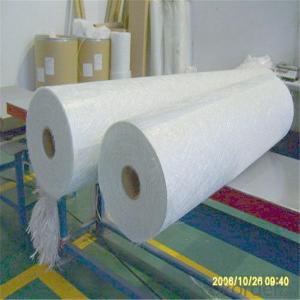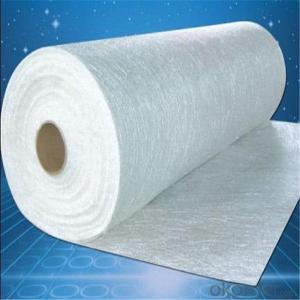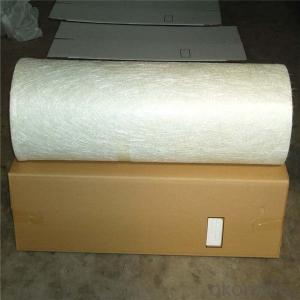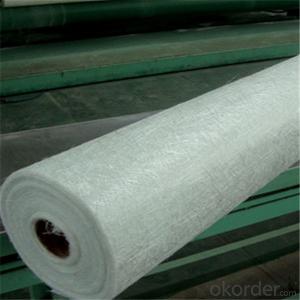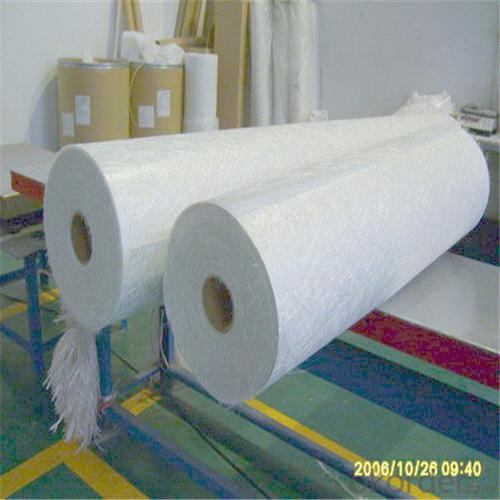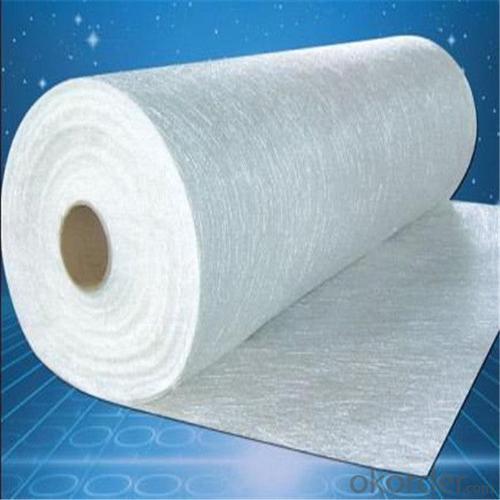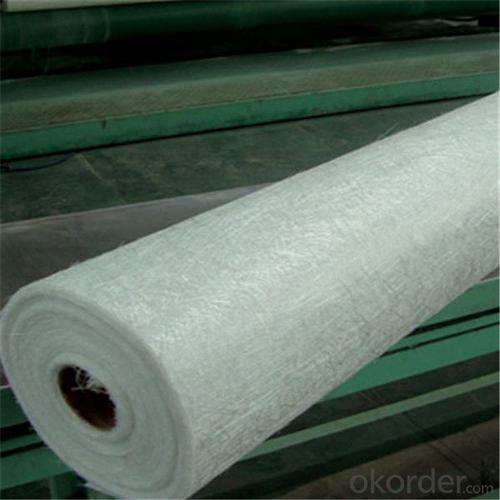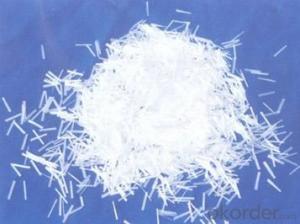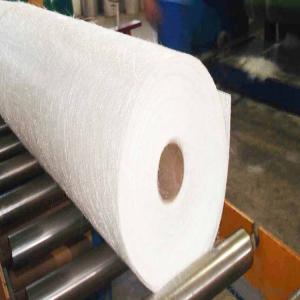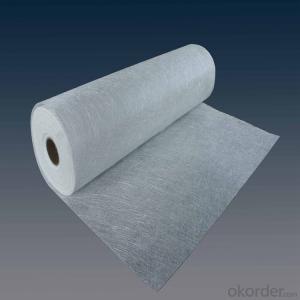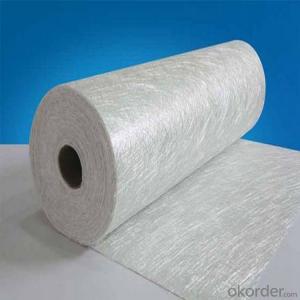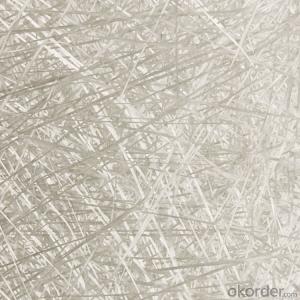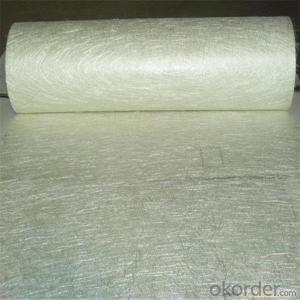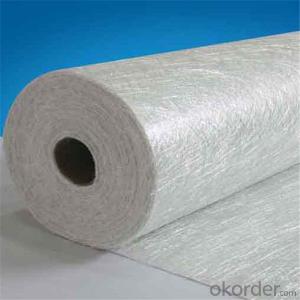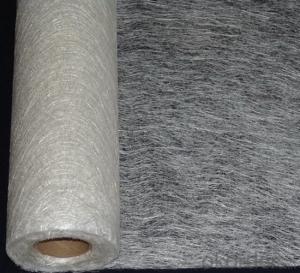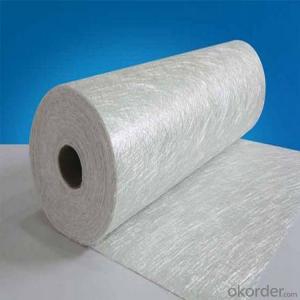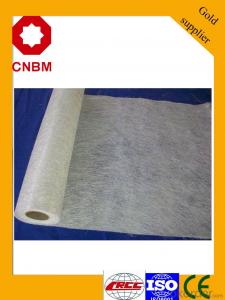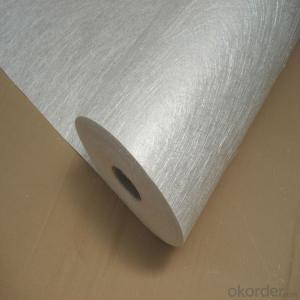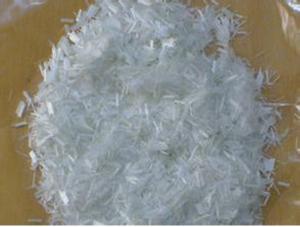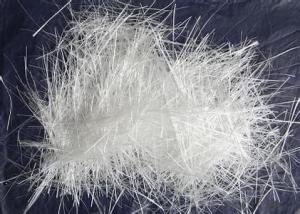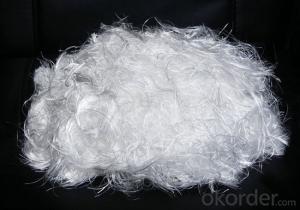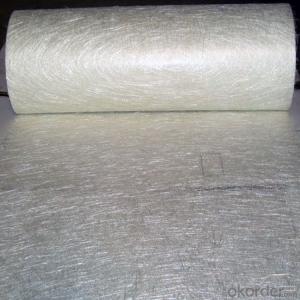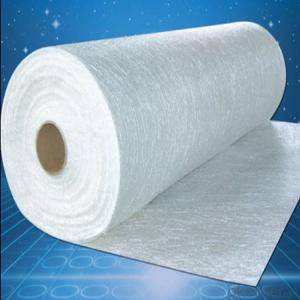Ar Fiberglass Chopped Strand 300g 450g 600g Fiberglass Reinforcement Mat
- Loading Port:
- Tianjin
- Payment Terms:
- TT OR LC
- Min Order Qty:
- 100 m.t.
- Supply Capability:
- 20000 m.t./month
OKorder Service Pledge
Quality Product, Order Online Tracking, Timely Delivery
OKorder Financial Service
Credit Rating, Credit Services, Credit Purchasing
You Might Also Like
Quick Details
| Technique: | Chopped Strand Fiberglass Mat (CSM) | Dimensions: | 450gsm | Mat Type: | Continuous Filament Mat |
| Fiberglass Type: | E-Glass | Softness: | softness | Place of Origin: | Jiangxi, China (Mainland) |
| Brand Name: | cnbm | Model Number: | 450gsm | color: | white |
| fiberglass type: | E glass | product: | e-glass powder chopped stand mats | binder: | powder or emulsion |
| width: | 1040 or 1270mm, as your requirement | weight: | 30 or 45kg/roll | paper tube diameter: | 90mm |
| outer diameter of roll: | 256mm | packing: | plastic film+carton box + pallet |
Packaging & Delivery
| Packaging Details: | plastic film+carton box + pallet |
| Delivery Detail: | 15-20days |
Specifications
1.e-glass powder chopped stand mats
2.binder:power or emulsion
3.width:1040mm or 1270mm
4.weight:450gsm
Picture
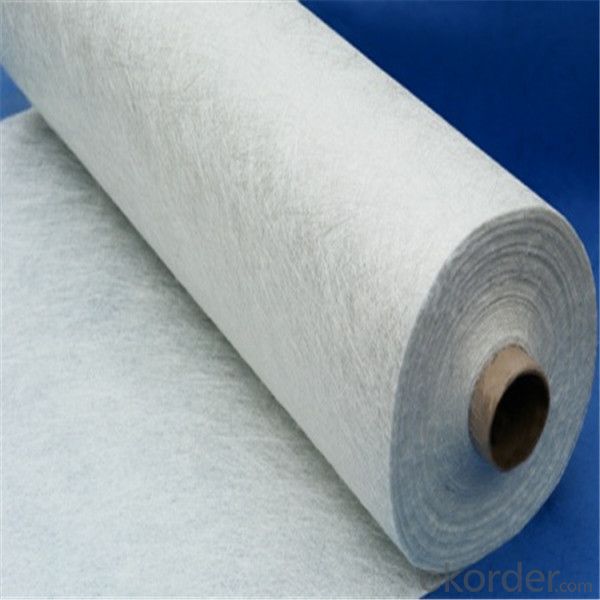
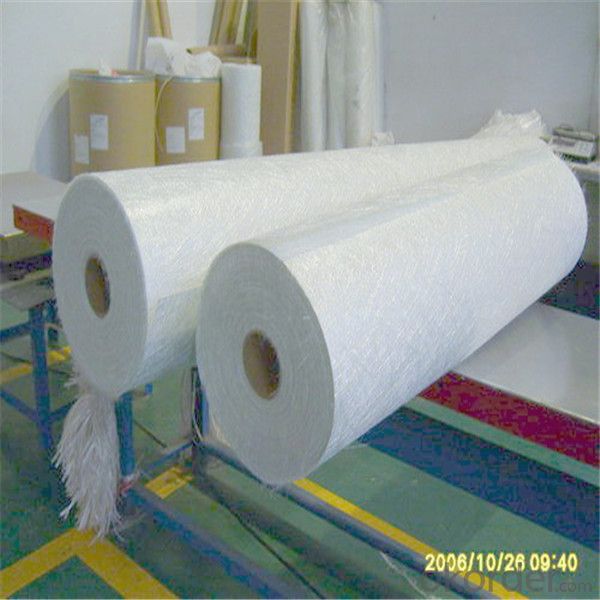
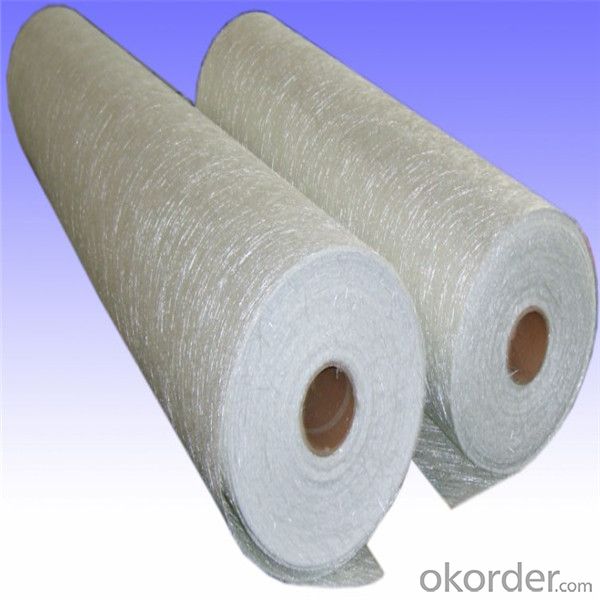
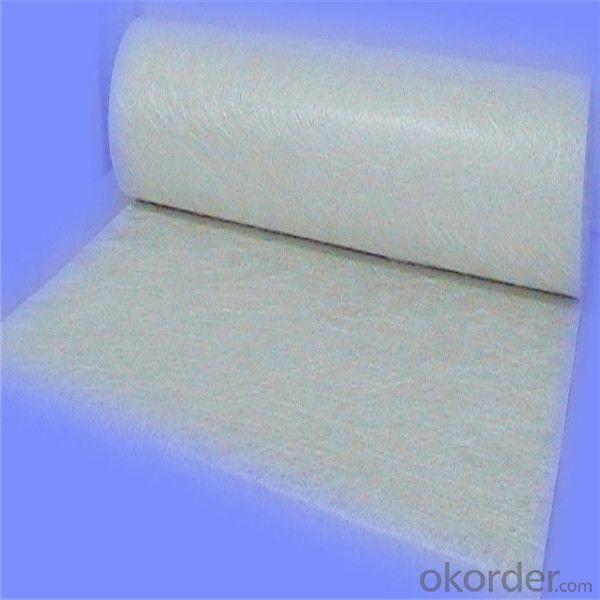
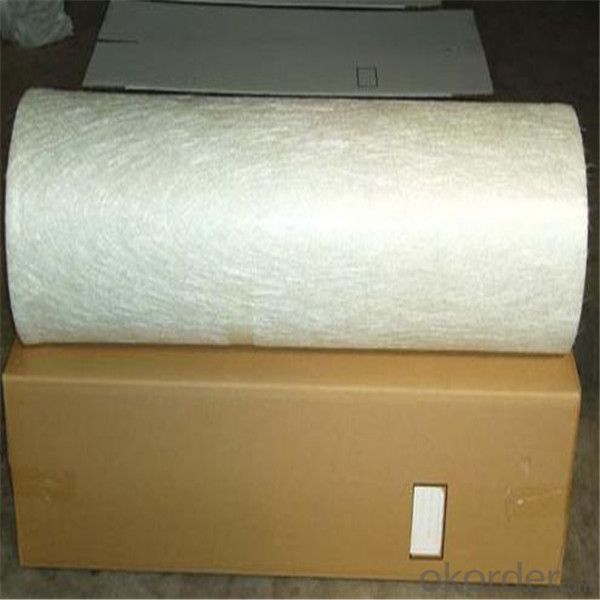
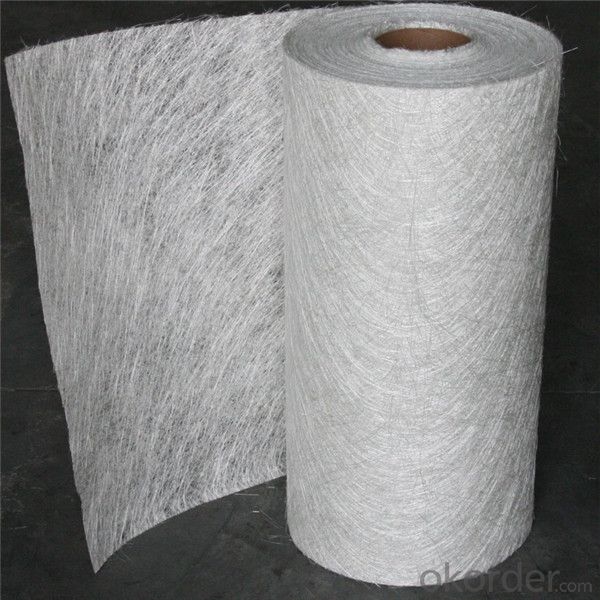
- Q: Can fiberglass chopped strand be used in marine applications?
- Fiberglass chopped strand is a viable option for marine applications. This versatile material possesses exceptional corrosion resistance, a favorable ratio of strength to weight, and notable impact resistance, rendering it suitable for marine environments. It is commonly employed in the construction of boats, kayaks, canoes, and other watercraft. By combining chopped strands with resins, a robust composite material is produced, capable of enduring the harsh sea conditions, such as exposure to saltwater, UV rays, and moisture. Furthermore, the ease of handling and ability to mold into various shapes, along with its commendable dimensional stability, contribute to fiberglass chopped strand's practicality. Given its durability and water resistance, this material is an exemplary choice for marine applications.
- Q: How does the fiber content affect the thermal conductivity of chopped strand composites?
- The fiber content has a significant impact on the thermal conductivity of chopped strand composites. As the fiber content increases, the thermal conductivity of the composite generally decreases. This is because the fibers act as insulating barriers, impeding the flow of heat through the material. The thermal conductivity of a material is determined by its ability to conduct heat. In chopped strand composites, the fibers are dispersed throughout a matrix material, which can be a polymer or a resin. The presence of fibers creates a network of thermal resistances within the composite, which reduces the overall thermal conductivity. When the fiber content is low, the spacing between the fibers is larger, allowing for more heat transfer pathways between the matrix material. This leads to higher thermal conductivity. However, as the fiber content increases, the spacing between the fibers decreases, increasing the number of thermal resistances and decreasing the thermal conductivity. Additionally, the aspect ratio of the fibers also plays a role in determining the thermal conductivity of chopped strand composites. Longer fibers with a higher aspect ratio provide more resistance to heat transfer, further reducing the thermal conductivity. It is important to note that other factors, such as the properties of the matrix material, the alignment and orientation of the fibers, and the interfacial bonding between the fibers and the matrix, can also influence the thermal conductivity of chopped strand composites. Therefore, a comprehensive understanding of these factors is essential for accurately predicting and controlling the thermal conductivity of these materials.
- Q: Is fiberglass chopped strand suitable for the production of playground equipment?
- Yes, fiberglass chopped strand is suitable for the production of playground equipment. Fiberglass is a lightweight and durable material that offers excellent strength-to-weight ratio, making it an ideal choice for playground equipment. It is resistant to corrosion, weathering, and UV radiation, ensuring that the equipment can withstand outdoor conditions and last for a long time. Fiberglass is also non-toxic, ensuring the safety of children using the playground equipment. Additionally, fiberglass can be molded into various shapes and sizes, allowing for creative designs and customization options for playground equipment. Overall, fiberglass chopped strand is a suitable material for the production of playground equipment due to its strength, durability, safety, and versatility.
- Q: What are the different surface treatments available for fiberglass chopped strand?
- Some of the different surface treatments available for fiberglass chopped strand include sizing, silane coupling agents, and specialty coatings.
- Q: What are the disposal options for fiberglass chopped strand waste?
- There are several disposal options available for fiberglass chopped strand waste. One option is to recycle the waste material. Fiberglass can be recycled by grinding it down and using it as filler material in other products such as concrete or asphalt. This not only helps to reduce the amount of waste going to landfills but also allows for the reuse of the fiberglass. Another disposal option is to incinerate the chopped strand waste. Incineration can be a viable option for disposing of fiberglass waste as it can generate energy from the combustion process. However, it is important to note that incineration should only be done in facilities equipped with proper air pollution control systems to minimize the release of harmful emissions. If recycling or incineration is not feasible, landfill disposal is another option. However, this should be considered as a last resort due to the potential environmental impact. When disposing of fiberglass chopped strand waste in a landfill, it is important to ensure that the waste is properly contained and managed to prevent any potential leaching of hazardous materials. In conclusion, the disposal options for fiberglass chopped strand waste include recycling, incineration, and landfill disposal. It is recommended to prioritize recycling and incineration where possible to minimize the environmental impact of this waste material.
- Q: What are the raw materials for the production of carbon fiber? What about technology ?
- Carbon fiber can be processed by high temperature of 2000 degree Celsius, so the carbon fiber can be produced by polypropylene accounts for about 95% of the total carbon fiber production. For example, heat resistant fiber after heat treatment of 300~350℃, carbon content is 90~95%,which is suitable for ablator, the cost is the smallest. Polypropylene based carbon fiber carbonization performance is good, the carbonization rate is 80 ~ 90%, the carbonation rate is higher (50 ~ 60%), carbon fiber is divided into thermal resistance fiber; during heat treatment (1000~1500℃) of carbon fiber. Varieties of carbon and graphite fiber are developing. Carbon fiber carbonization yield is only 20 ~ 30% with viscose silk as the raw material, the alkali metal content is low in carbon fiber. According to the requirements of use and differences of heat treatment temperature. With the asphalt fiber as raw material, the carbon content is up to 99%. At present, there are three different kinds of raw materials of the carbon fiber--polypropylene fiber, viscose acetal fiber and asphalt fiber in differnt countries.
- Q: How does the electrical conductivity of the chopped strand affect its performance?
- The performance of chopped strand in different applications can be greatly influenced by its electrical conductivity. Generally, electrical conductivity refers to a material's ability to conduct electric current. In the case of chopped strand, which is typically made of glass fibers, the electrical conductivity can vary depending on factors such as the glass composition and the presence of coatings or treatments on the strands. One particular application where electrical conductivity plays a significant role is in composite materials. Chopped strand is commonly used as a reinforcement in composites to enhance their mechanical properties. However, if the chopped strand possesses high electrical conductivity, it can lead to problems associated with electrical grounding or interference. This can be particularly troublesome in applications that require electrical insulation, like electronic enclosures or aerospace components. Conversely, there are certain applications that can actually benefit from a higher electrical conductivity of the chopped strand. For example, in electromagnetic shielding applications, which aim to block or redirect electromagnetic radiation, a conductive chopped strand can improve the shielding's effectiveness. The conductive properties of the chopped strand can aid in dissipating or redirecting the electrical energy, thereby reducing its impact on the surrounding environment. Furthermore, the electrical conductivity of the chopped strand can also affect its resistance to electrical arcing or sparking. In high-voltage applications where the risk of electrical discharge is a concern, using chopped strand with lower electrical conductivity can help minimize the occurrence of arcing and potential damage to the material or surrounding components. To sum up, the electrical conductivity of chopped strand can significantly impact its performance in diverse applications. It is crucial to carefully evaluate the specific requirements of the application and select a chopped strand with the appropriate electrical conductivity to ensure optimal performance and avoid any potential issues related to electrical grounding, interference, or electrical discharge.
- Q: How does the fiber pull-out resistance of fiberglass chopped strand affect the performance of composites?
- The performance of composites is greatly influenced by the fiber pull-out resistance of fiberglass chopped strand. When external forces or stress are applied to a composite material, the fiber pull-out resistance determines how well the fiberglass strands resist being pulled out from the surrounding matrix material. Having a high fiber pull-out resistance is desirable because it ensures a strong bond between the fiberglass strands and the matrix material. This strong bond improves the load-bearing capacity of the composite, making it more resistant to deformation and failure when exposed to mechanical, thermal, or chemical stresses. The fiber pull-out resistance has an impact on various aspects of composite performance. Firstly, it contributes to the overall strength and stiffness of the composite. By preventing the fibers from sliding or moving within the matrix material, they can efficiently transfer applied loads across the composite structure. As a result, the mechanical properties of the composite are improved, including higher tensile, compressive, and flexural strength, as well as enhanced resistance to fatigue and creep. Secondly, the fiber pull-out resistance influences the composite's ability to resist delamination and crack propagation. When the fibers are securely bonded to the matrix material, they act as reinforcements and effectively distribute stress throughout the composite. This prevents the formation and spread of cracks, thereby enhancing the durability and fracture toughness of the material. Additionally, the fiber pull-out resistance affects the dimensional stability and resistance to environmental factors of the composite. With a strong bond between the fibers and the matrix material, there is a reduced risk of fiber-matrix debonding or fiber pull-out caused by moisture absorption, temperature fluctuations, or exposure to chemicals. This ensures that the composite maintains its structural integrity and performance over time. In conclusion, the fiber pull-out resistance of fiberglass chopped strand plays a significant role in determining the performance of composites. A high fiber pull-out resistance improves the strength, stiffness, durability, and dimensional stability of the composite, making it a reliable and suitable material for various applications in industries such as automotive, aerospace, construction, and sports equipment.
- Q: What are the typical cost considerations when using fiberglass chopped strand composites?
- When using fiberglass chopped strand composites, some typical cost considerations include the initial cost of the materials themselves, the cost of any additional additives or resins required for the composite, the cost of processing or manufacturing the composite, and any costs associated with post-processing or finishing. Additionally, factors such as the size and complexity of the final product, the volume of production, and the required quality standards may also influence the overall cost of using fiberglass chopped strand composites.
- Q: Is fiberglass chopped strand suitable for the production of water slides?
- Fiberglass chopped strand, indeed, proves to be a fitting material for the production of water slides. Widely used in the manufacturing of such slides, fiberglass stands out as a versatile and durable substance. Its commendable attributes include a high strength-to-weight ratio, resistance to corrosion, and the ability to withstand harsh weather conditions. Specifically engineered for reinforcement purposes, fiberglass chopped strand emerges as an optimal selection for crafting robust and enduring water slides that can endure constant exposure to water, UV rays, and the inevitable wear and tear associated with regular usage. Moreover, fiberglass possesses the capability to be molded into diverse shapes and sizes, thus enabling the creation of intricate and personalized designs for water slides. As a whole, fiberglass chopped strand encompasses the essential properties and performance necessary for the production of water slides, rendering it an apt choice for this particular application.
Send your message to us
Ar Fiberglass Chopped Strand 300g 450g 600g Fiberglass Reinforcement Mat
- Loading Port:
- Tianjin
- Payment Terms:
- TT OR LC
- Min Order Qty:
- 100 m.t.
- Supply Capability:
- 20000 m.t./month
OKorder Service Pledge
Quality Product, Order Online Tracking, Timely Delivery
OKorder Financial Service
Credit Rating, Credit Services, Credit Purchasing
Similar products
Hot products
Hot Searches
Related keywords
